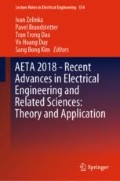Abstract
In this paper, we propose a new method for pupil localization in images. The main contribution of the proposed method is twofold. Firstly, the method is based on the proposed eye model that takes into account physiological properties of eyes (i.e. reflects the properties of pupil, iris, and sclera). Secondly, the correct shape and the position of the model are determined using an evolutionary algorithm called Self-Organizing Migrating Algorithm (SOMA). Thanks to these ideas, the proposed method is faster than the state-of-the-art methods without reduction of accuracy. We evaluated the algorithms on two publicly available data sets in remote tracking scenarios (namely BioID [7] and GI4E [11]).
Access this chapter
Tax calculation will be finalised at checkout
Purchases are for personal use only
References
Davendra, D., Zelinka, I., et al.: Self-organizing migrating algorithm. New Optimization Techniques in Engineering (2016)
Fuhl, W., Geisler, D., Santini, T., Rosenstiel, W., Kasneci, E.: Evaluation of state-of-the-art pupil detection algorithms on remote eye images. In: Proceedings of the 2016 ACM International Joint Conference on Pervasive and Ubiquitous Computing: Adjunct, UbiComp 2016, pp. 1716–1725. ACM, New York (2016). https://doi.org/10.1145/2968219.2968340
Fuhl, W., Kübler, T., Sippel, K., Rosenstiel, W., Kasneci, E.: Excuse: Robust pupil detection in real-world scenarios. In: Azzopardi, G., Petkov, N. (eds.) Computer Analysis of Images and Patterns, pp. 39–51. Springer, Cham (2015)
Fuhl, W., Santini, T.C., Kübler, T.C., Kasneci, E.: Else: ellipse selection for robust pupil detection in real-world environments. CoRR abs/1511.06575 (2015). http://arxiv.org/abs/1511.06575
George, A., Routray, A.: Fast and accurate algorithm for eye localization for gaze tracking in low resolution images. CoRR abs/1605.05272 (2016). http://arxiv.org/abs/1605.05272
Javadi, A.H., Hakimi, Z., Barati, M., Walsh, V., Tcheang, L.: Set: a pupil detection method using sinusoidal approximation. Front. Neuroeng. 8, 4 (2015). https://www.frontiersin.org/article/10.3389/fneng.2015.00004
Jesorsky, O., Kirchberg, K.J., Frischholz, R.W.: Robust face detection using the hausdorff distance. In: Bigun, J., Smeraldi, F. (eds.) Audio-and Video-Based Biometric Person Authentication, pp. 90–95. Springer, Heidelberg (2001)
Kacete, A., Royan, J., Seguier, R., Collobert, M., Soladie, C.: Real-time eye pupil localization using Hough regression forest. In: 2016 IEEE Winter Conference on Applications of Computer Vision (WACV), pp. 1–8, March 2016
Li, D., Winfield, D., Parkhurst, D.J.: Starburst: a hybrid algorithm for video-based eye tracking combining feature-based and model-based approaches. In: 2005 IEEE Computer Society Conference on Computer Vision and Pattern Recognition (CVPR 2005), Workshops, p. 79, June 2005
Świrski, L., Bulling, A., Dodgson, N.: Robust real-time pupil tracking in highly off-axis images. In: Proceedings of the Symposium on Eye Tracking Research and Applications, ETRA 2012, pp. 173–176. ACM, New York (2012). https://doi.org/10.1145/2168556.2168585
Villanueva, A., Ponz, V., Sesma-Sanchez, L., Ariz, M., Porta, S., Cabeza, R.: Hybrid method based on topography for robust detection of iris center and eye corners. ACM Trans. Multimedia Comput. Commun. Appl. 9(4), 25:1–25:20 (2013). http://doi.acm.org/10.1145/2501643.2501647
Wagh, A.M., Todmal, S.R.: Article: eyelids, eyelashes detection algorithm and hough transform method for noise removal in iris recognition. Int. J. Comput. Appl. 112(3), 28–31 (2015)
Zelinka, I.: SOMA — Self-Organizing Migrating Algorithm. In: New Optimization Techniques in Engineering, pp. 167–217. Springer, Heidelberg (2004). https://doi.org/10.1007/978-3-540-39930-8_7
Acknowledgments
This work was partially supported by Grant of SGS No. SP2018/42, VŠB - Technical University of Ostrava, Czech Republic.
Author information
Authors and Affiliations
Corresponding author
Editor information
Editors and Affiliations
Rights and permissions
Copyright information
© 2020 Springer Nature Switzerland AG
About this paper
Cite this paper
Fusek, R., Dobeš, P. (2020). Pupil Localization Using Self-organizing Migrating Algorithm. In: Zelinka, I., Brandstetter, P., Trong Dao, T., Hoang Duy, V., Kim, S. (eds) AETA 2018 - Recent Advances in Electrical Engineering and Related Sciences: Theory and Application. AETA 2018. Lecture Notes in Electrical Engineering, vol 554. Springer, Cham. https://doi.org/10.1007/978-3-030-14907-9_21
Download citation
DOI: https://doi.org/10.1007/978-3-030-14907-9_21
Published:
Publisher Name: Springer, Cham
Print ISBN: 978-3-030-14906-2
Online ISBN: 978-3-030-14907-9
eBook Packages: EngineeringEngineering (R0)

